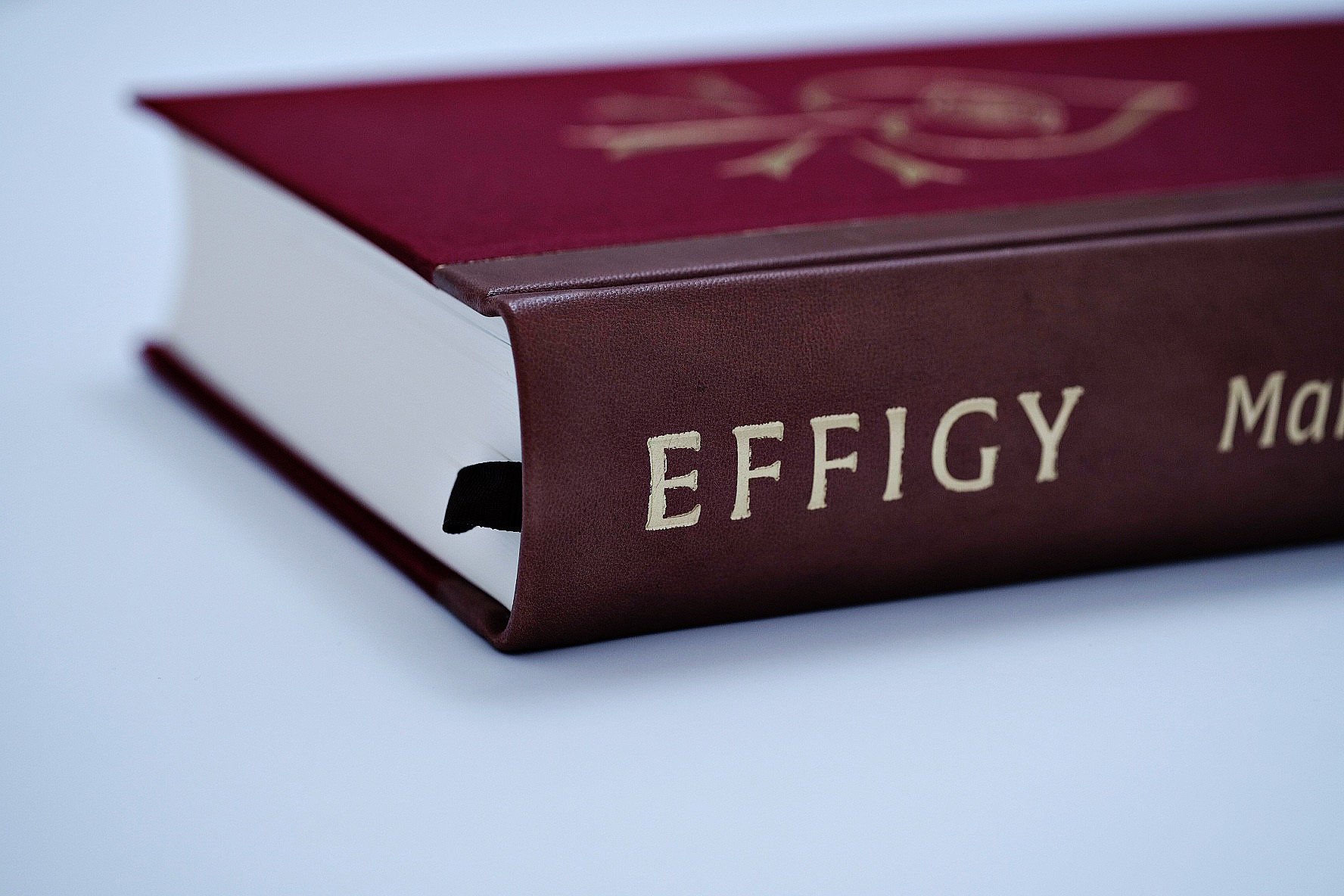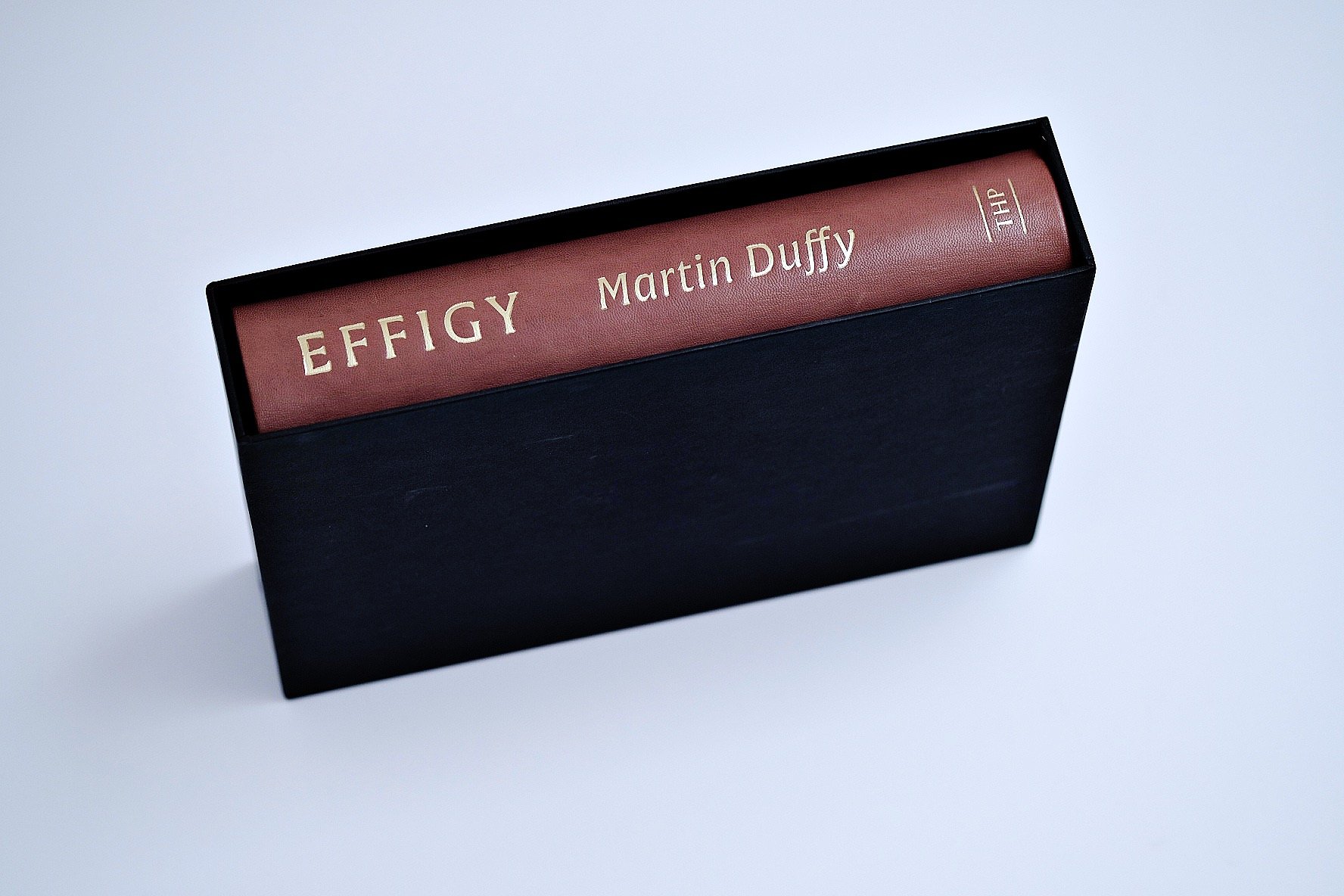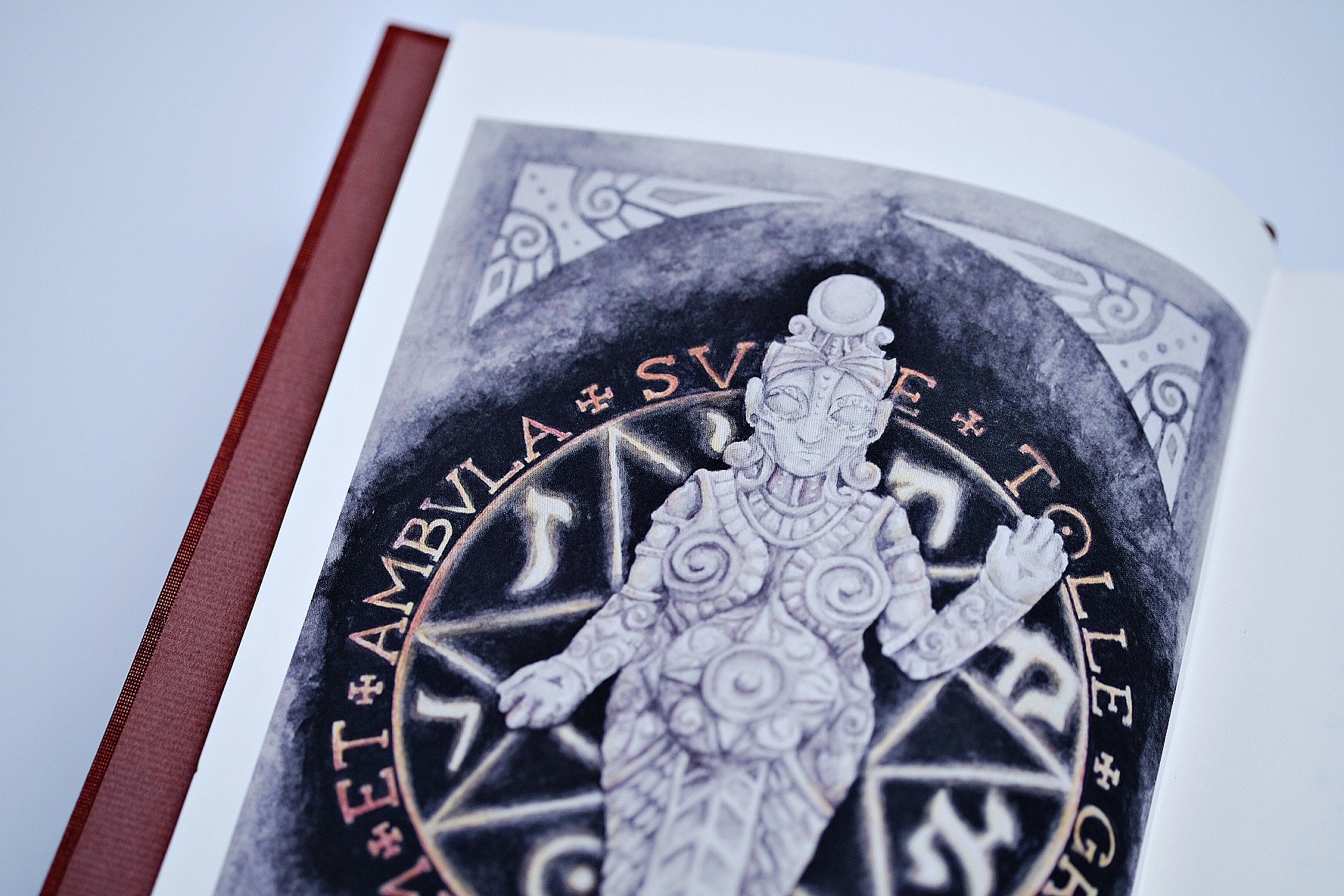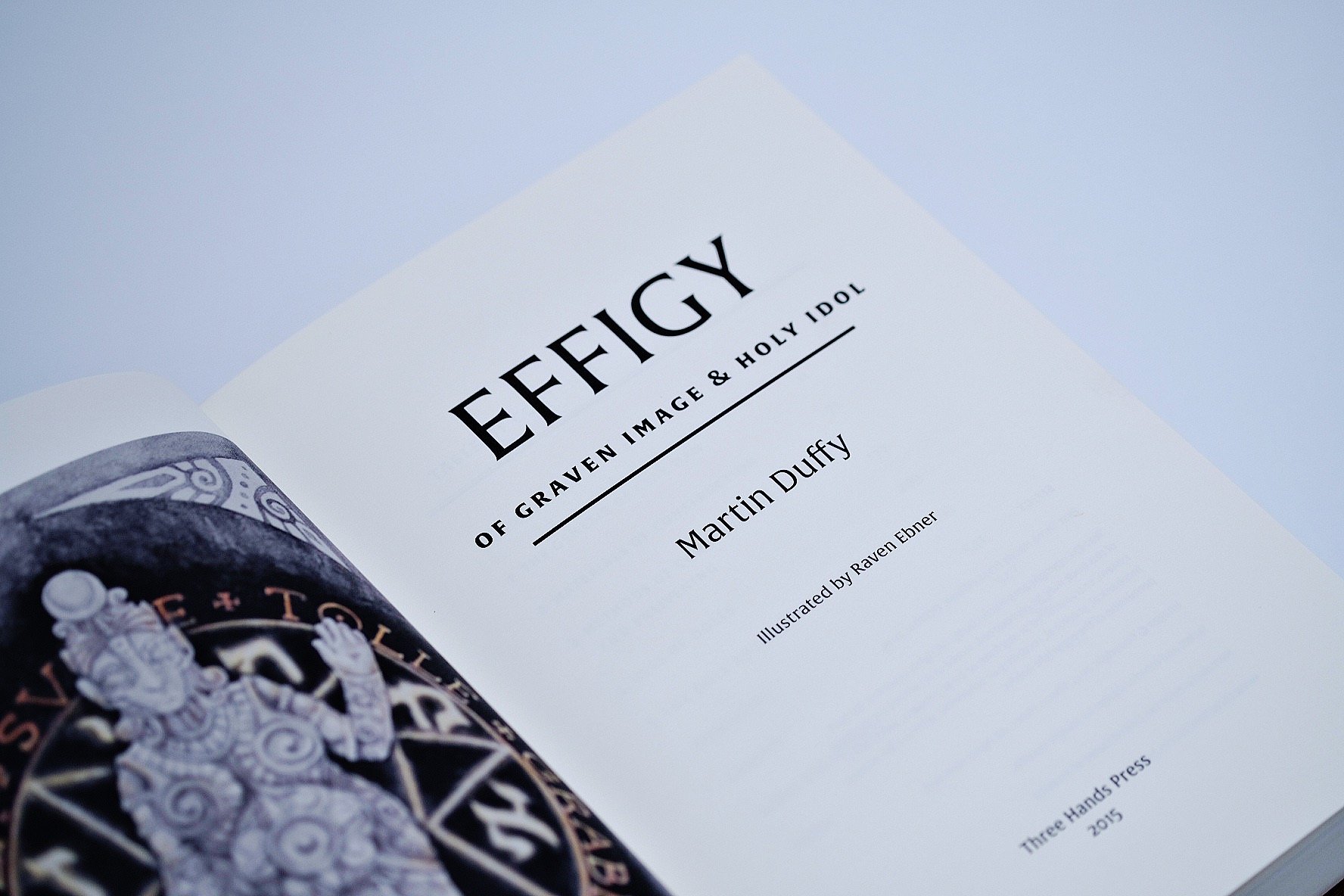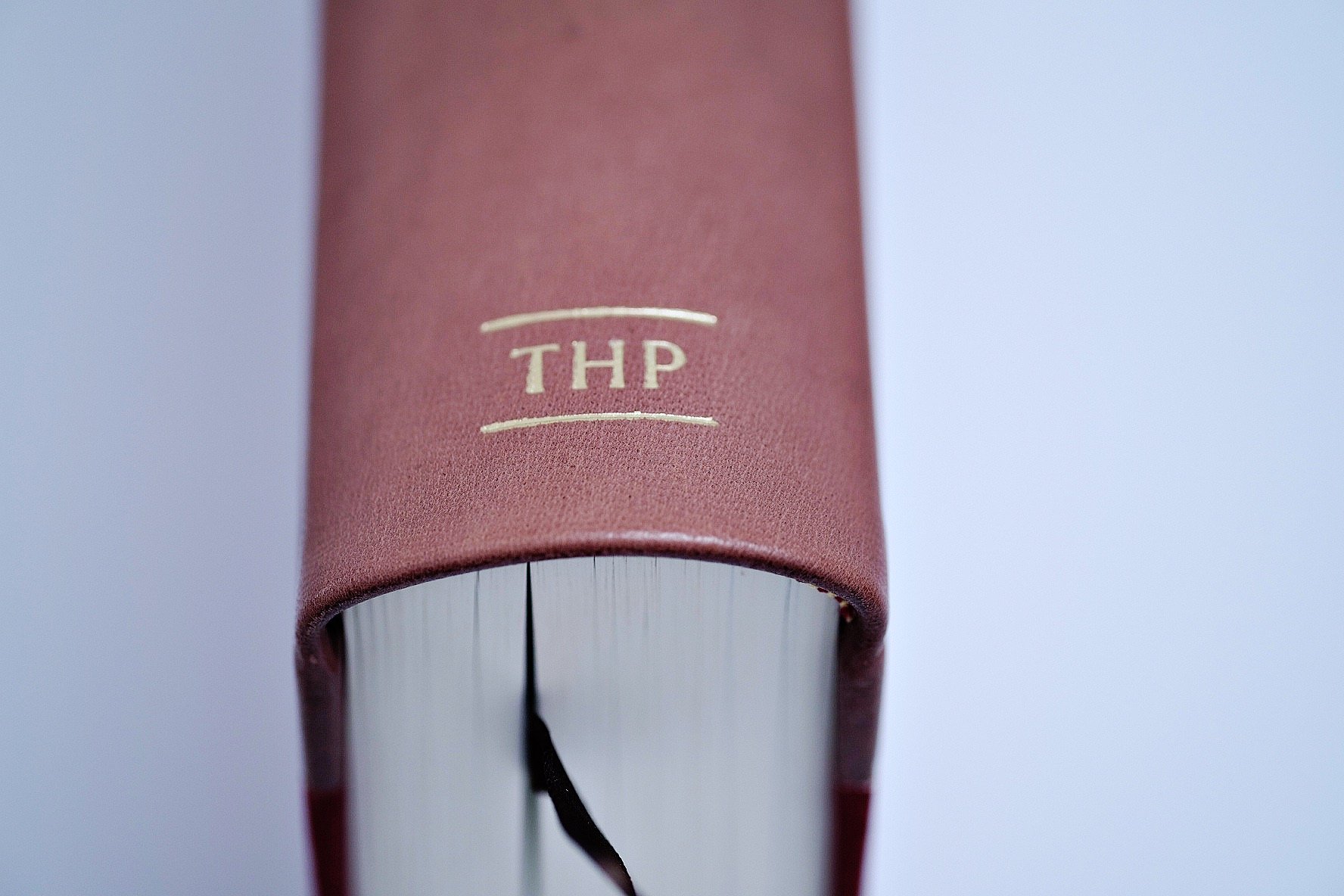‘Effigy: of Graven Image and Holy Idol’ by Martin Duffy
Review: Martin Duffy, Effigy: of Graven Image and Holy Idol, Hercules: Three Hands Press, 2015; images of Deluxe edition: quarter bound in mahogany goat, with special endpapers, limited to 63 copies.
by Ian Chambers
Martin Duffy’s Effigy: of Graven Image and Holy Idol is a powerhouse of research into the history and use of idols, dolls, statuary and cultic images. For many magical practitioners, the manufacture and use of representative sympathetic magic has a long history and use. If you have ever wanted a complete and thorough examination of the subject, including background philosophy, methods of creation and enlivening, purpose and practice, then this book might just answer your prayers.
Duffy brings together his own insightful perspective, evidently gathered through years of practice and study, with a presentation of the most comprehensive analysis of occult use of imagery to date. Indeed, at a whopping 560 pages this comprehensive work is thorough, ensuring its place as a research piece deserving of academic esteem. However, it is eminently readable and accessible to the layman and student of witchcraft and the occult.
From the outset, the scope of Effigy aims to be inclusive, incorporating within its consideration the esoteric, religious and folkloric application of the construction and influence of magical images through holy symbolism, sympathetic magic and worship. Indeed, the means and purpose of effigies includes the dual heritage of beneficent and malefic use which the author acknowledges form the outset. Meanwhile, the perspective from which the author approaches the subject is explicitly that particular lens of witchcraft, especially culturally British sorcery. Within the introduction, Duffy makes plain that the means of enquiry and method – comparative exploration around the esoteric and occult modes of effigy making – all the while coalescing analogous examples around the principal theme and body of witchcraft.
Due to the comprehensive range of Effigy, an extensive bibliographical resource is inevitably drawn upon, including a number of familiar names and titles as well as those more delightfully peculiar. Indeed, there is a wide range of studies comprising Duffy’s research, providing solid ground upon which to explore this topic and supported by reference material. Of course, everyone with even a cursory interest in witchcraft is aware of the poppet, the making of dolls for magical manipulation, as well as the theurgic use of statuary and enlivening of images for magical and religious use. However, within this work, Duffy has exhaustively expanded the available knowledge in a single compendium that is both instructive and entertaining.
Given the size of the volume, it is wisely separated into parts, each provided with headings that refer to the specialism of the categories discussed. This gives us both a clear and immediate idea of the direction of the book, but is also reassuringly comprehensive and yet offers necessary breaks and structure in an otherwise immense work. This means that such categories as “Dolls of the Field” (which explores corn dollies, agricultural and root based effigies) provide a wealth of information within a clear structure, all tied neatly together without losing interest or direction.
Throughout, the author consistently expresses the broad ranging interest of the occult milieu, drawing from Theosophy, contemporary mythology, alchemy, Natural Philosophy, folklore, all while conforming to the introductory promise of approaching this subject through the lens of British witchcraft with comparative study. This enables us to experience the full flavour of the text, intermingled with an exegesis of the witchcraft current and particular reference to the Sabbatic Cultus. Martin Duffy’s knowledge, experience and understanding of witchcraft is without question, and his open-minded approach to the broader occult information and application provides a detailed expansion of the subject.
Overall, Duffy’s writing style is clear, concise, readable and enjoyable. This makes it much easier to approach what might otherwise be a daunting volume. Given the physical size of the book, it is not the most convenient to hold at all times but gives the air and impression of a more traditional compendium.
Being such a dense exposition, Effigy commences from the genesis of the first graven image: mankind, fashioned from clay and brought to life by the creator. We begin this study with the expertly presented understanding of creation – first prima materia must be made manifest. Therefore, following Paracelsian precepts, all of creation is made available within man.
However, indicative of the manner in which he is set apart from the rest of the natural world, man is not conjured from out of nothingness, rather he is sculpted from the matter created. Moulded by the very hand of god, this one-to-one compact between the Creator and the Created is to evoke the congress betwixt an artist and his chosen medium. That man, as last created, was made of all preceding things is affirmed by Paracelsus […] (p. 13f.)
Indeed this introductory, excursion into the primordial man, “…with the attendant mysteries of creation encompassed within his divine proportions” (p.15) speaks to something of the mystical. This opening gambit is particularly enjoyable and whets the appetite for the expected subsequent chapters that work around the use of image making, material and use.
The first part, then, is a tour de force as an explication of occult and, in particular, Sabbatic philosophy and mythos as a means of apprehending magic as a subject, laying the groundwork for our later understanding of the manufacture and application of graven images. Moreover, one might regard this section as a detailed examination of witchery, with regular reference to the peculiar bent of the Sabbatic current - peppered as the text is with citations from Andrew Chumbley and Daniel Schulke, current and last Magisters of the Cultus Sabbati.
Through the first part of this extensive study, then, we are taken adroitly through the origins of clay man and occult lore, the use of powders and dusts, and the vessel as effigy, concluding with an insight into the witch bottle.
The next section of Effigy takes in an exhaustive exposition of the material of creation beyond that of previously discussed clay. Once again providing a lengthy narrative journey through the matter of image making, the reader is lead through the variety of substances used in making dolls, images and poppets, which might include: “wax, cloth, bestial hides and vegetal matter”.
Following this is a detailed course in the methods of constructing magical effigies, and enlivening them, drawing form occult lore and philosophy and, once again, is coloured by the author’s preferential treatment of witchcraft. This is no deterrent to the magical operator, however, and is a complementary study to many magical works. The feeling that this section evokes, as is true of the rest of the book, is that of folklore studies, making diligent use of various pieces of traditional beliefs and practices, historic records, producing a piece of literature that feels as though it could itself be an artefact in the Museum of Witchcraft and Magic in Boscastle, Cornwall.
As with the previous Clay Man segment, the reader is treated to the in-depth and meticulous research and study of Duffy, written in an approachable and likeable manner. This is really a deep dive into magical practice, within the scope of the effigy, and provides such detailed explication that includes, for example, an analysis of charming as identified by two generalised categories: Direct Formula and Indirect Formula (p. 261). This demonstrates the author’s ability to critically dissect magic and its use with an enquiring mind that seeks to comprehend the how and why, and representing this in a digestible, understandable and, most importantly, useable way. Peppered throughout the pages are boxes of relevant information, including special charms, instructions or harvested references collected from certain practices and sources significant to the chapter.
Leading inevitably into the fourth part of the book, Duffy takes us through the use of dolls, looking at the application of poppets, dolls, fetishes and vessels of spirit for the usual magical purposes of love, fertility, protection, healing, spirit work and, of course, malefic magics involving death and cursing, as well as such counter magics.
Finally, the fifth part of Effigy examines The Doll as Idol, an investigation into the religio-spiritual application and use of the graven image and of idolatry. The smaller section of the book, this is none the less an important look into the totemic idol, the inspirited image or spirit house, or revered figure which can range from a holy or lingam stone, the witch’s stang, the pole, and more detailed imagery and philosophy. Unsurprisingly, the thematic tone of the section covers a broad perspective of witchcraft, often making reference to the more traditional modalities. Indeed, parts of this chapter are of particular relevance to those studying and practicing Traditional Witchcraft and wishing to read a detailed and fascinating insight into some of the philosophy and purpose behind many forms of witchery:
Erected at the crossroads, the pole becomes an idol of the witch god haunting its bedevilled environs. (p. 508)
Throughout the book, some beautiful and tonal artwork is provided by Raven Ebner, with a distinctive and evocative style that masterfully matches and complements the text. Indeed, the artwork is truly delicious and coloured to perfectly highlight the subject matter, giving another facet to the overall folk magic feel of the book.
Viewed in its entirety, Effigy is at first a rather daunting proposition and one is left wondering how the subject can be expanded into such a thick tome. However, the thoroughness of Duffy’s research and study, his diligent fact-finding and investigation into the historic and contemporary practical use of the idol is superb, revealing how mammoth a subject it actually is – masterfully handled and treated with care and consideration.
Furthermore, for all the length of the book, it is well balanced and written to be accessible to the average reader, despite its breadth and depth. This work is a great compendium of insight into effigy magics for the practicing and student magician.
For the Traditional Witch, this provides a fascinating insight into the philosophies and ideas within witchcraft and folk sorcery, bringing together a delightful collection of folklore, methods and means – much of which is scattered throughout the book in individual boxed segments. For the more comprehensive student, the work provides many avenues of private research and threads to be followed, reflecting the excellent reference points that will prove, no doubt, a great resource. Indeed, expect to see Effigy referenced in other works in the near future.
